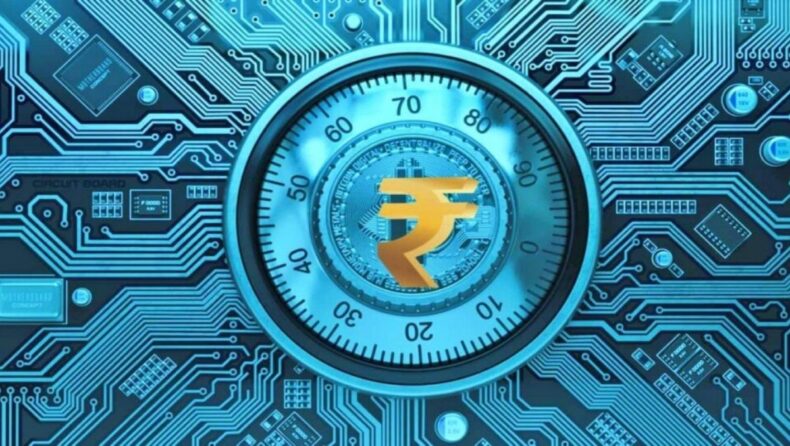The existence of the digital rupee will cut off the cost of production of paper cash
In her speech last week in the 2022-23 Budget speech, Finance Minister Nirmala Sitharaman revealed that “India is launching a bank-backed digital currency soon.”
She further added that the launch of Central Bank Digital Currency (CBDC) would be a tremendous digital economy booster. The finance minister also said, “Digital currency will result in a more efficient and cheaper currency management system.”
What is digital currency?
Digital currency, as the name suggests, is money in digital form. It’s almost similar to cryptocurrency.
But, the major difference between them is that the digital rupee will be backed and issued by the central bank of India, i.e., RBI. Besides, in her speech, the finance minister stated Bitcoin and other private cryptocurrencies as “virtual assets,” meaning they are not to be legal tenders.
One of the anonymous sources also divulged that the digital rupee would be numbered in units similar to fiat currency’s unique numbers. The source further said that it would be just like carrying money in the phone instead of a wallet.
And unlike the e-wallets offered by private companies, the digital currency will be fully backed by RBI (Reserve Bank of India). Plus, the central bank will even keep track of all transactions, although this might raise privacy concerns.
Advantages
Cashless transactions have popularized majorly in the last few years. The recent pandemic has increased the need for contactless and safe digital transactions. Hence, the announcement of the introduction of government-backed digital currency is as much appreciated as required.
Also, the digital rupee will reduce the cost of printing, distributing, and storing paper currency for the central bank as the cash circulation will convert into online legal tenders.
A market estimate reveals that the cost for every Rs 100 note is around Rs 15-17 in a four-year life cycle. This cycle involves ruined notes coming back to the central bank through commercial banks and printed new notes.
Ram Rastogi, a member of Fin-Tech Association for Consumer Empowerment (FACE) and a former employee of National Payments Corporation of India, stated that “Central Bank Digital Currency being a legal tender and a revamped version of physical currency, will substantially reduce the cost of currency management.”
The most notable significance of a digital rupee will be that users will be able to carry out transactions directly without any third-party intermediate due to the currency’s blockchain mechanism under the direct liability of RBI. In addition to that, users will also convert the digital rupee into physical currency.
The Prime Minister’s view
In a virtual conference on “Atmanirbhar Arthavyavastha” (self-reliant economy), PM Narendra Modi remarked on the introduction of the digital rupee in the Budget speech, saying that it will “revolutionize the fintech sector by creating new opportunities and lessen the burden of handling, printing and logistics management of cash.”
He also noted, “The CBDC will enable physical currency exchange with digital currency. It will strengthen the digital economy”. He further added that transactions would become “more secure and risk-free” and help evolve global digital payment systems.
Present at the conference were BJP chief J. P. Nadda, senior party leaders and chief ministers of states. Their acceptance and reactions were in stark contrast to the government’s reservations regarding the issue so far.
Why CBDC suddenly?
With a marked decrease in the use of physical currency and the growing popularity of digital transactions through private e-wallets, the central bank wanted to create a safer, more reliable, legal, and convenient form of digital currency.
Most notably is the deadline set for the launch. In that short amount of time, will the government smoothly run a central-backed digital payment and turn the citizens away from the current rage of cryptocurrencies? That remains to be seen.
Published By – Vanshu Mehra













